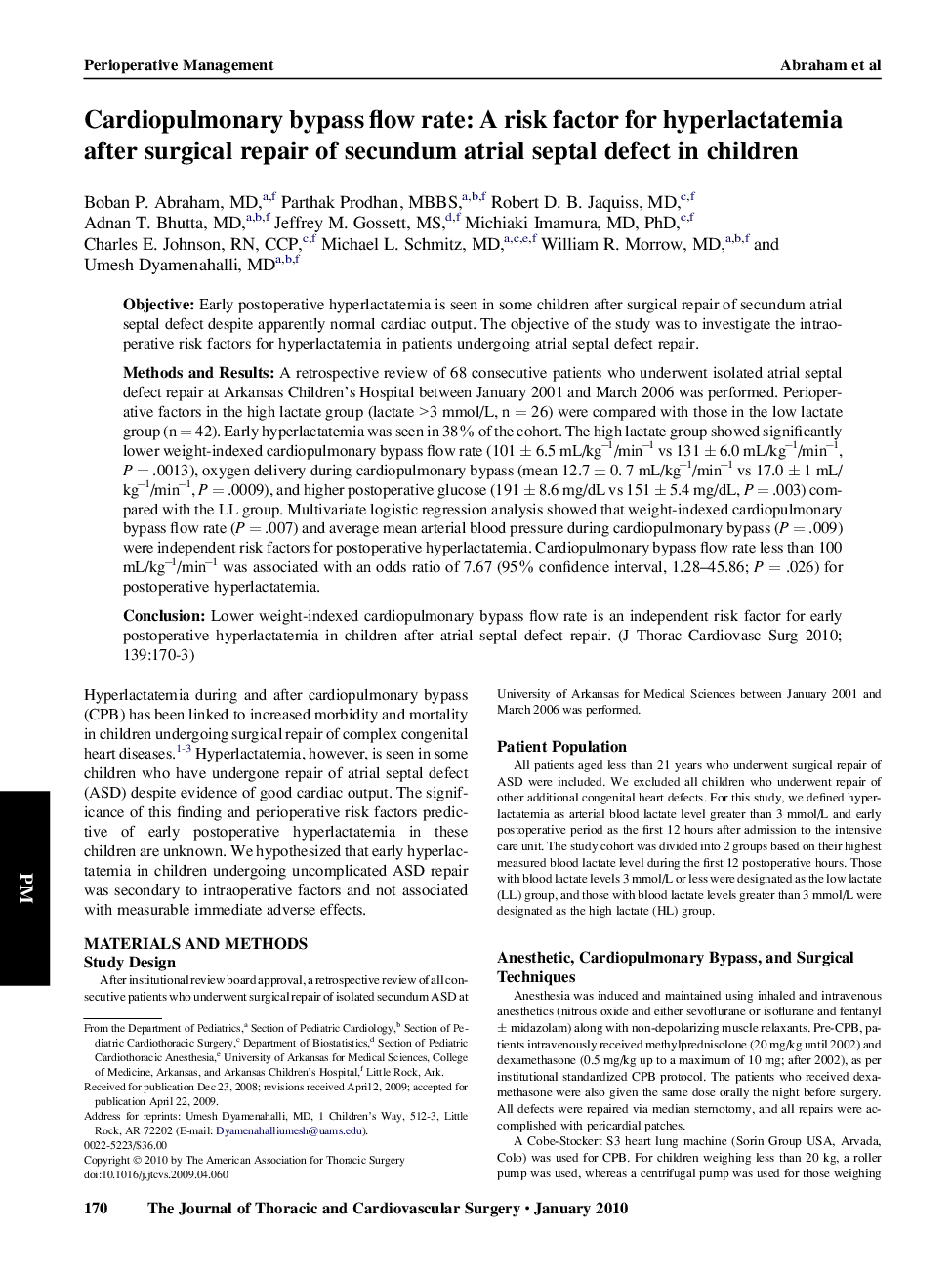| Article ID | Journal | Published Year | Pages | File Type |
|---|---|---|---|---|
| 2984721 | The Journal of Thoracic and Cardiovascular Surgery | 2010 | 4 Pages |
ObjectiveEarly postoperative hyperlactatemia is seen in some children after surgical repair of secundum atrial septal defect despite apparently normal cardiac output. The objective of the study was to investigate the intraoperative risk factors for hyperlactatemia in patients undergoing atrial septal defect repair.Methods and ResultsA retrospective review of 68 consecutive patients who underwent isolated atrial septal defect repair at Arkansas Children's Hospital between January 2001 and March 2006 was performed. Perioperative factors in the high lactate group (lactate >3 mmol/L, n = 26) were compared with those in the low lactate group (n = 42). Early hyperlactatemia was seen in 38% of the cohort. The high lactate group showed significantly lower weight-indexed cardiopulmonary bypass flow rate (101 ± 6.5 mL/kg−1/min−1 vs 131 ± 6.0 mL/kg−1/min−1, P = .0013), oxygen delivery during cardiopulmonary bypass (mean 12.7 ± 0. 7 mL/kg−1/min−1 vs 17.0 ± 1 mL/kg−1/min−1, P = .0009), and higher postoperative glucose (191 ± 8.6 mg/dL vs 151 ± 5.4 mg/dL, P = .003) compared with the LL group. Multivariate logistic regression analysis showed that weight-indexed cardiopulmonary bypass flow rate (P = .007) and average mean arterial blood pressure during cardiopulmonary bypass (P = .009) were independent risk factors for postoperative hyperlactatemia. Cardiopulmonary bypass flow rate less than 100 mL/kg−1/min−1 was associated with an odds ratio of 7.67 (95% confidence interval, 1.28–45.86; P = .026) for postoperative hyperlactatemia.ConclusionLower weight-indexed cardiopulmonary bypass flow rate is an independent risk factor for early postoperative hyperlactatemia in children after atrial septal defect repair.
